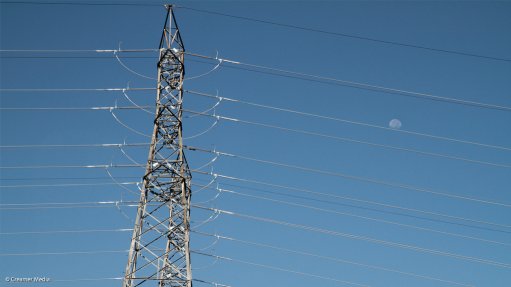Government aims to help derisk Northern Cape green hydrogen projects
Northern Cape Economic Development, Trade and Investment Promotion Agency acting project management unit manager Shawn Modise has said the government aims to play a key role in derisking green hydrogen projects in support of the Northern Cape’s green hydrogen ambitions, while enabling support for the industry.
Speaking at the Devac Hydrogen-H conference in Johannesburg on September 7, he said the Northern Cape had intrinsic advantages that positioned it as a suitable centre of a national green hydrogen ecosystem. Among these advantages was the high renewable energy potential, with solar and wind capacity factors averaging at about 23% and 37%.
He said that as much as 11 400 GW of solar and 846 GW of wind capacity could potentially be built in the region. Additionally, the less complex topography made the Northern Cape an ideal region for green hydrogen development, with 50% of the Northern Cape land available for solar or wind projects.
While some areas are not suitable, energy projects can include protected areas such as the Monarch Namaqua National Park. However, 90% of the Northern Cape land is considered flat enough for renewable energy development.
Additionally, about 300 km of shoreline is available. The coastline at Boegoebaai, in particular, has the capability to support a greenfield deepwater port.
Large mineral deposits in the region also make it an attractive area for development, with 28% of the Northern Cape's gross domestic product coming from mining. Modise noted that manganese deposits supplied about 25% of the global demand, while zinc and lead deposits in the province supplied about 13% of global demand.
Significant mines in the area, he said, would serve as key tenants for special economic zones.
The international accessibility of the region also makes it attractive, as it could be connected to key industrial hubs in Namibia, Botswana and the rest of Southern Africa. The N10 highway plays a key role as a national route into Namibia, and the N11 into Botswana.
Rail routes between Ariamsvlei and the Port of Lüderitz are also of high value.
Speaking, in particular, about the Boegoebaai development, Modise said derisking efforts were under way. Firstly, this included negotiating multilateral agreements with potential offtake markets to unlock financing and secure the offtake.
Another measure being taken is to attract green bonds and blended finance instruments for critical infrastructure, such as additional grid capacity, and other just transition-aligned projects.
In addition, the government is hosting stakeholder engagement sessions, aiming to ensure balanced positive outcomes for communities and projects.
The local government is also committed to supporting permitting, such as driving region-wide strategic environmental assessments and coordinating across the government departments to address execution roadblocks.
Modise also noted the importance of enabling a supplier ecosystem through balanced policy measures and small- to medium-sized enterprise (SME) support, which would enable access to key suppliers.
Enabling the ecosystem in this manner will involve setting localisation policies, while balancing project and local benefit with the aim of long-term local industrial development.
He also said that elevating underserved entrepreneurial opportunities for SMEs was a critical part of the strategy.
In addition, providing capacity development support to promote community involvement in the ecosystem is important, as is developing a shared services centre for qualifying SMEs to support hiring back-office admin support.
Article Enquiry
Email Article
Save Article
Feedback
To advertise email advertising@creamermedia.co.za or click here
Comments
Press Office
Announcements
What's On
Subscribe to improve your user experience...
Option 1 (equivalent of R125 a month):
Receive a weekly copy of Creamer Media's Engineering News & Mining Weekly magazine
(print copy for those in South Africa and e-magazine for those outside of South Africa)
Receive daily email newsletters
Access to full search results
Access archive of magazine back copies
Access to Projects in Progress
Access to ONE Research Report of your choice in PDF format
Option 2 (equivalent of R375 a month):
All benefits from Option 1
PLUS
Access to Creamer Media's Research Channel Africa for ALL Research Reports, in PDF format, on various industrial and mining sectors
including Electricity; Water; Energy Transition; Hydrogen; Roads, Rail and Ports; Coal; Gold; Platinum; Battery Metals; etc.
Already a subscriber?
Forgotten your password?
Receive weekly copy of Creamer Media's Engineering News & Mining Weekly magazine (print copy for those in South Africa and e-magazine for those outside of South Africa)
➕
Recieve daily email newsletters
➕
Access to full search results
➕
Access archive of magazine back copies
➕
Access to Projects in Progress
➕
Access to ONE Research Report of your choice in PDF format
RESEARCH CHANNEL AFRICA
R4500 (equivalent of R375 a month)
SUBSCRIBEAll benefits from Option 1
➕
Access to Creamer Media's Research Channel Africa for ALL Research Reports on various industrial and mining sectors, in PDF format, including on:
Electricity
➕
Water
➕
Energy Transition
➕
Hydrogen
➕
Roads, Rail and Ports
➕
Coal
➕
Gold
➕
Platinum
➕
Battery Metals
➕
etc.
Receive all benefits from Option 1 or Option 2 delivered to numerous people at your company
➕
Multiple User names and Passwords for simultaneous log-ins
➕
Intranet integration access to all in your organisation

















